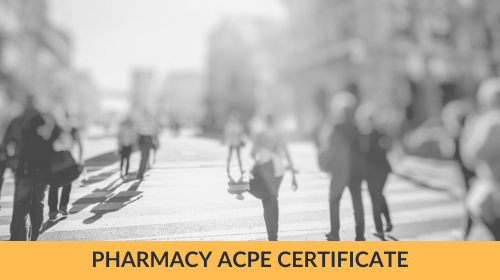Advanced Certificate Program
Online Continuing Education for Healthcare, Professionals, Law Enforcement, and Layperson
Overdose Lifeline’s Advanced Certificate Program provides continuing education across eight core topics in substance use disorder (SUD) and opioids. Designed for clinicians and professionals, it builds knowledge, confidence, and practical skills for prevention, treatment, recovery support, and advocacy.
92% of people strongly agree/agree...
"The course information has enhanced my professional knowledge and effectiveness in my interaction with individuals affected."
Trusted by clinicians, professionals, and partners in all 50 U.S. states, the Federal Bureau of Prisons, U.S. Navy, NIH National Institute of Drug Abuse, Health Departments, Schools, Universities, non-profits and more.
Evidence-informed learning design drawn from cognitive psychology research, a broad-based theory that analyzes the process of taking in new information. Applies Bloom’s taxonomy of educational objectives.
Nationally accredited video-based on-demand courses. Take online courses from anywhere, completing when it is convenient for you.
Obtain the CME/CE hours required for licensed professionals and DEA MATE Act. Certificates and CE credit available upon successful 8 course and practicum completion.
87% of people strongly agree/agree... "Would recommend this certificate program to a friend or colleague."
8 Online Courses and Practicum Assignment

$300

$300

$300

$300

$300
The Overdose Lifeline advanced certificate program is intended for those pursuing professional development and continuing education.
Completion illustrates that you have knowledge in a specific area (in this case Substance Use Disorders). The courses are focused on skills building / knowledge enhancement and may also satisfy licensure continuing education requirements (e.g. CE credits for nurses, pharmacist, etc.) and for opioid prescribers DEA Mate Act training requirements.
The certificate program includes a practicum exercise and assignment and eight (8) online courses delivering 20 credits.
The submission of the practicum exercise and assignment completes the certificate track.
What ODL provides is different from a professional certification which confirms that an individual has met specific standards and competencies in a profession or role.
A professional certification may lead to credentials (letters after your name) Example: becoming a Certified Health Education Specialist (CHES) or a Certified Peer Recovery Specialist (CPRS).
There is typically a financial difference as well. Professional development and continuing education are based on $15 per credit hour model with Certifications often involving exam preparation fees and certification exam fees.
AMA PRA Category 1 Credit™ (ACCME) is accepted for many clinical continuing education requirements and many societies and credentialing bodies accept the AMA PRA Category 1 Credit™ as an equivalent as long as the topic is relevant to the applicant’s field or discipline.
The practicum for the 20-credit Advanced Certificate Program includes the completion of a:
Download Overview: Practicum-Assignment-Overview.pdf
To earn your CE credits and receive your certificate for each of the 8 courses:
To receive your certificate for the Advanced Certificate Program:
Yes, group or enterprise pricing is available as is progress reporting.
Learn more about Group Pricing
Yes, the ODL courses are fully responsive site designed for learning on any device, including mobile, tablet, desktop and laptop.
The ODL courses may be accessed from a computer, tablet, or mobile device. Internet access is required as are speakers for audio.
The following web browsers are supported:
Desktop - Firefox, Safari, Chrome, and Edge. Note the course platform does not support Internet Explorer.
Mobile - iOS Safari: 11 and up, Chrome, Samsung Internet.
While this will vary per individual, you can approximate 20 hours to complete the 8 courses and the practicum approximately 3-4 hours*.
The courses and practicum will remain available in your account for 6-months --allowing you to resume and complete the courses and practicum at your own pace and schedule within the 6-month time period.
*The two practicum assigment options each require approximately 3-4 hours of written work. The Abstinance project option would entail 3-4 hours of written work over a 2-week period.
Download the Practicum Overview: Practicum-Assignment-Overview.pdf